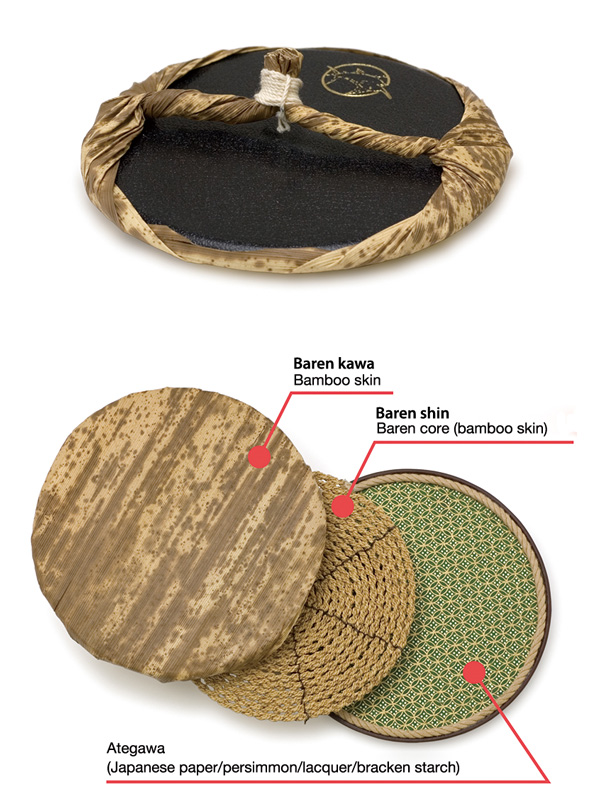The Baren - a brief description
The below excellent brief description of the baren, the traditional rubbing tool used to transfer ink from the woodblock to the paper is taken from Complete Works of Akira Kurosaki: Catalogue Raisonne: Woodcuts & Paper Works 1965-2006, Akira Kurosaki, ABE Publishing Ltd. , 2006, p. 155.
Photo source: MAU Art & Design Glossary http://art-design-glossary.musabi.ac.jp/baren/ | The baren, or pressing [rubbing] tool, is essential for ukiyo-e traditional printing. The traditional baren, consists of a lacquered paper disc (atekawa or ategawa), a coil of tightly twisted bamboo cord (baren shin) and a covering made from bamboo sheath (baren kawa). The bamboo cord is created by first cutting many narrow strips of bamboo sheath. Two of these are twisted together to create a base twine. Then they are doubled-up and twisted again in a quadrupled strand, then finally re-twisted to form eitehr an 8-ply cord, or a 16-ply cord. The resulting cord is coiled in a spiral, tied together, placed inside the disc and covered with a bamboo sheath. The multiple bumps resulting from the elaborate twisting of this coiled cord are what perform the most important function of the baren when pressure is applied. Through the selection of the baren combined with the method of applying pressure, one can control the printing to create an expression that is both strong and delicate. |

